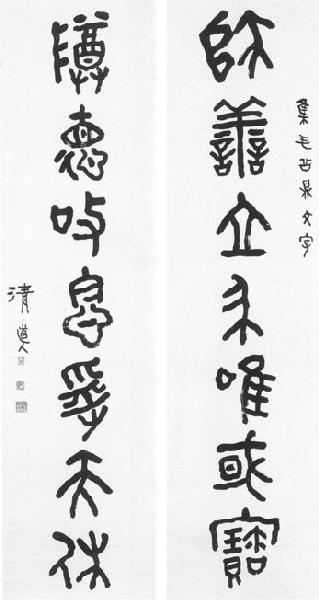| Art Q&A > Calligraphy |
|
|
Greater Seal Script
Zhouwen is also called Dazhuan (greater seal script). Elucidations of the Signs and Explications of the Graphs, compiled by Xu Shen, included more than 220 Zhouwen characters. Modern scholar Wang Guowei thought that these characters featured balanced left and right parts and a bit complicated structures.
Three stones carved with inscriptions were discovered in the Northern Song Dynasty (960-1127), and contents were all malediction from the King of the Qin State to the King of the Chu State. People in the later generations called these inscriptions as Zhouchuwen (Script of Malediction to Chu). Zhouwen, Shiguwen, Zhouchuwen and part of inscriptions on bronze in the Qin State all belonged to the same style and are collectively called as Zhouwen or Dazhuan. Zhouwen, characterized by shapely strokes and compact structures, was officially prescribed standard script of that time and had been used for a long period. |
||||
All rights reserved. Reproduction of text for non-commercial purposes is permitted provided that both the source and author are acknowledged and a notifying email is sent to us. |
||||
 |
